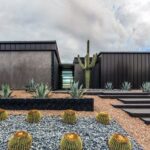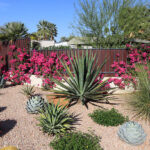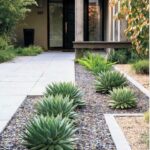Desert landscaping is a popular choice for homeowners looking to create a low-maintenance and drought-tolerant outdoor space. This style of landscaping utilizes plants and materials that are well-suited to arid climates, making it a practical and sustainable option for those living in desert regions. By following some key principles and incorporating the right elements, homeowners can create a beautiful and functional desert landscape.
One of the key components of desert landscaping is the use of native plants that are adapted to the harsh conditions of the desert. These plants are well-suited to the hot, dry climate and require minimal water and maintenance. Some popular choices for desert landscaping include cacti, succulents, and drought-tolerant shrubs and trees. By choosing native plants, homeowners can create a sustainable and environmentally-friendly landscape that will thrive in the desert environment.
In addition to native plants, incorporating hardscape elements into a desert landscape can add visual interest and functionality. Materials such as gravel, rocks, and boulders can be used to create pathways, seating areas, and accents that complement the natural beauty of the desert. Hardscape elements can also help to reduce water usage by minimizing the amount of turf or grass in the landscape, which in turn reduces the need for irrigation.
When designing a desert landscape, it is important to consider the layout and placement of plants and elements to create a cohesive and visually appealing space. Grouping plants with similar water and sunlight needs together can help to conserve water and reduce maintenance. Incorporating different textures, colors, and heights can create depth and interest in the landscape, while also mimicking the natural diversity found in desert environments.
Another important aspect of desert landscaping is proper irrigation and water management. While desert plants are drought-tolerant, they still require some water to thrive. Drip irrigation systems can be an efficient way to deliver water directly to the roots of plants, reducing water waste and promoting healthy growth. It is also important to monitor and adjust watering schedules based on seasonal changes and weather conditions to ensure that plants are receiving the right amount of water.
Overall, desert landscaping offers a practical and sustainable option for homeowners looking to create a beautiful outdoor space in arid climates. By incorporating native plants, hardscape elements, thoughtful design principles, and efficient irrigation practices, homeowners can create a low-maintenance and environmentally-friendly landscape that thrives in the desert environment. With proper planning and care, a desert landscape can provide year-round beauty and enjoyment for years to come.













